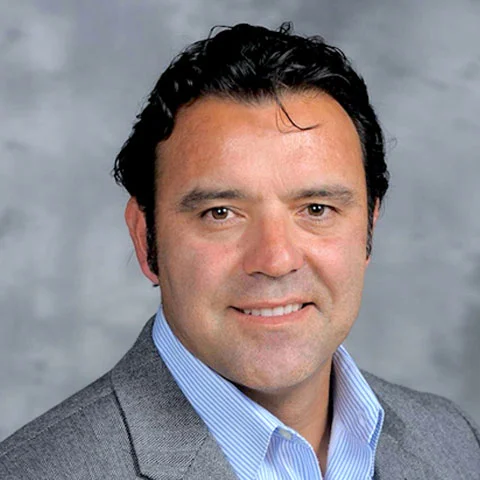Let's review these challenges
Writing personal insurance lines, including home, vehicle and life insurance, requires much of the same knowledge as writing commercial insurance lines. Both rely heavily on technology, effective communication and customer service. However, writing personal lines comes with some key challenges. As the entire industry evolves, certain challenges around personal lines may change the way things are done in the insurance back office.
Insurance customers have been forced to adjust, as in so many other areas of their lives, to changing technology. Some demographics tend to adjust more readily while others struggle with change.
Many insurance customers, especially those who have been purchasing insurance for more than a decade or so, recall when face-to-face interactions were the norm. It used to be that most people knew their insurance agent personally, perhaps even referring them to friends through word-of-mouth. Multiple generations of families might stay with one agent. They likely had a phone conversation, if not an in-person meeting, when it came time to add products or make changes to a policy. When they reported a claim, they had a direct phone number to call.
Today, of course, things work much more efficiently, which by and large benefits insurance companies. Many people shop and buy insurance policies online, receive paperless renewals, and keep their insurance ID cards on their phones. They might report a claim via an 800 number or even an app. Changes like these have moved a bit slower with commercial lines, but with personal lines, they can seem dramatic, especially to customers.
As an insurance agent who writes personal lines, there is a danger of losing sight of the customer’s point of view. Customers, especially those with more than one policy, may get confused about who to contact. Since they will inevitably speak with multiple points of contact, one less-than-satisfying interaction can color their experience with your company. For example, an individual in customer service who is having an off day or lacking proper training might cause a conflict. Or, technology itself might cause frustration such as when a website goes down or phone lines are busy.
Another area where changes in society impact personal insurance lines is with the evolving “gig economy.” With commercial lines, vehicles are, by definition, used for business. With personal lines, it’s easy to assume—perhaps incorrectly—that the customer uses their vehicle only for personal use. The customer themselves may be confused as to how to shop for insurance.
More and more people are using their personal vehicles for gig work, thanks to companies like Lyft and GrubHub, along with other emerging industries. Personal lines don’t typically address damage or injuries that occur when an individual in a personal vehicle transports people or goods for money.
Insurance agents selling personal lines need adequate training to extract the right information from customers, to assess how they use their vehicles. Policies themselves may need to be adapted to address continuing changes in the economy.
A business must meet insurance requirements to stay in business. By contrast, an individual can choose to forgo insurance—even when doing so violates the law. The Insurance Research Council reported that, in 2015, 13 percent of drivers lacked auto insurance. That number marked a 12.3 percent increase in just five years, according to Insurance Journal.
Many drivers report cost as a barrier to buying insurance. Car insurance companies attempt to address this barrier through discounts and bundles. It will remain an ongoing challenge, at least for the near future, to get and keep drivers buying insurance. Even when price is a factor, excellent customer service and sales tactics can help win over reluctant customers.
When it comes to homeowners insurance, technology changes the landscape daily. Devices that monitor everything from “porch pirates” to water pipe leaks stand to reduce homeowner losses.
As more homeowners install smart home systems, giving them control of numerous internet-enabled features from their phones, they reduce their risk of theft, water damage, fire, mudslides, and storms. For some personal line providers, this translates to offering discounts for certain smart home features that reduce insurance risk. With this comes the need for proof of what features a customer actually has installed and adjusting their policy as warranted.
Insurance sales and customer service teams need adequate training to assess risk and answer customer questions about their home’s technology.
Global disease outbreaks like the zika virus in 2016 or coronavirus in 2020 tend to affect people’s sense of security which, in turn, affects their buying habits. Fewer people may travel but those who do are more likely to purchase travel insurance. They might, instead, invest more in life and health insurance.
In another ongoing development, there have been reports that increased frequency of catastrophic storms and wildfires is putting insurance costs out of reach for many.
Global events may be temporary or lasting, but either way, insurance companies need to make adjustments to encourage people to invest in insurance. It is important to keep your sales and customer service teams up to date on current events and trends, and prepare them to address customer concerns.
Even when technology works smoothly and all members of a team provide excellent service, remember that some customers struggle with change. Those who enjoyed a more personal experience for years or even decades sometimes resist the use of digital communication or don’t know how to use it. It’s important to show you still value these customers’ businesses.
There are steps insurance companies can take to help keep their customers happy and comfortable regardless of changes in the industry and the larger world. First, the customer onboarding experience lays the groundwork for a positive relationship. Quality customer service training, insurance BPO services, and attention to communication methods all contribute to the experience as well. Consistency is key.
Excellent service that respects customers’ comfort level with change will set your insurance company apart. While price remains an important factor in personal lines, as with commercial lines, individuals may rank it less important than trust in the company. Outsourcing administrative functions can free up insurance agents to devote sufficient time and energy to maintaining strong customer relationships.
Remember that personal line customers must be willing to share all of their information, like information around their driving habits or hazards in their home, in order to get the best coverage. Cultivating a relationship of trust encourages honesty.
Providing a positive customer experience, and thereby maximizing profits, maintains paramount importance, whether in personal or commercial insurance lines. However, it may be even more important with personal lines since they are, in fact, personal. These customers expect a certain kind of relationship, one where they can place their trust.
Omni-channel communication tools can support every part of the customer experience. Whether a customer experiences your brand via phone, email, text, chat, or even in person, they should be able to count on someone to be there when they need them. A highly educated, experienced insurance staff, equipped with excellent tools for tracking a customer through the relationship, will provide the best service. In this way, every customer, personal or commercial, tech savvy or “old school,” will receive the same level of service. A great way to achieve this goal is to rely on an insurance BPO partner.
Explore the ways in which Patra can equip your insurance company to provide outstanding customer service for personal lines.
About Patra
Patra is a leading provider of technology-enabled insurance outsourcing services and AI-powered software solutions. Patra powers insurance processes by optimizing the application of people and technology, supporting insurance organizations as they sell, deliver, and manage policies and customers through our PatraOne platform. Patra’s global team of over 6,500 process executives in geopolitically stable and democratic countries that protect data allows agencies, MGAs, wholesalers, and carriers to capture the Patra Advantage – profitable growth and organizational value.

